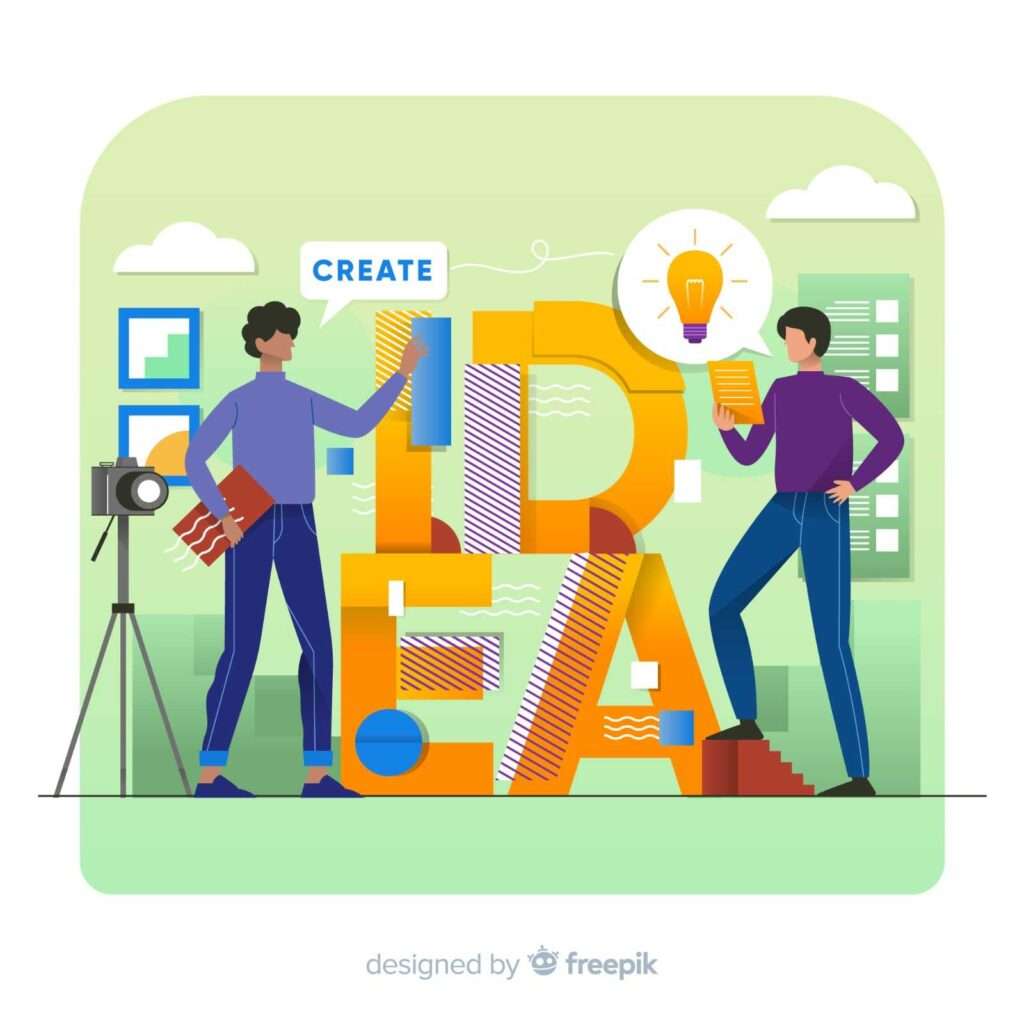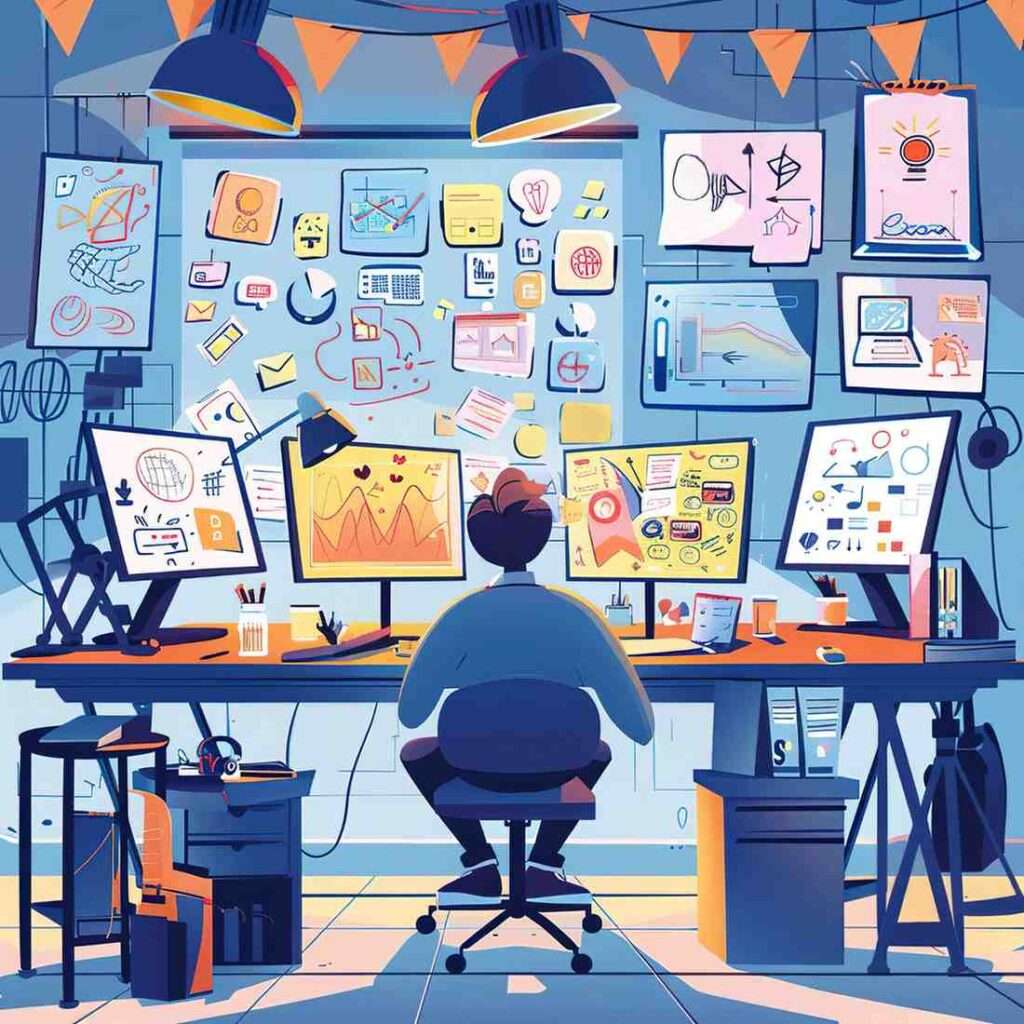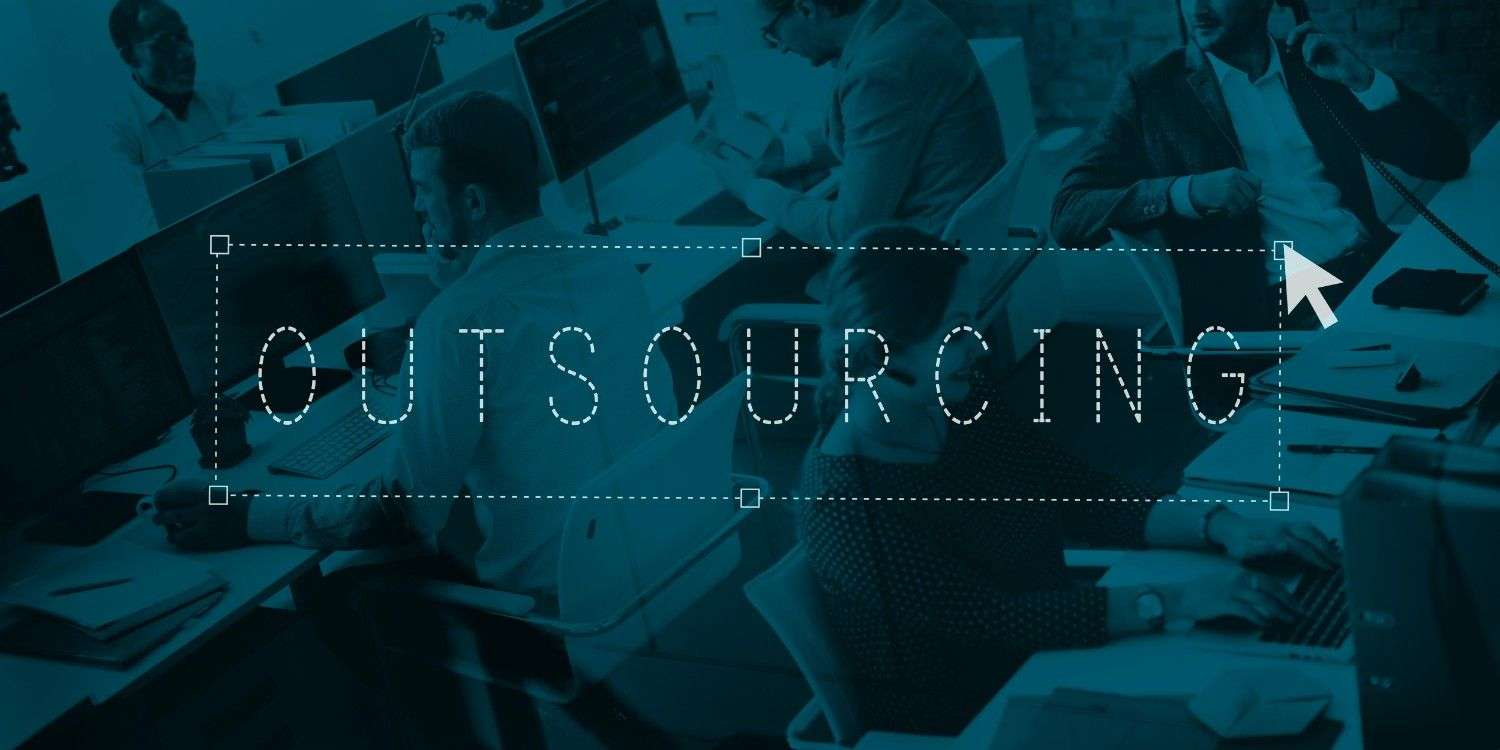Top Outsourcing Trends to Watch in 2025 and the Near Future
Posted on : Oct 13, 2025
The creative landscape is shifting at a velocity never before witnessed. From the evolution of consumer devices to the proliferation of streaming platforms and the rise of immersive technologies, the demand for high-quality, specialized, and constantly refreshed creative content—spanning design, video, 3D modeling, and interactive experiences—is accelerating exponentially.

For businesses, this creates a profound strategic challenge: how to meet this insatiable content appetite with limited resources, all while maintaining competitive advantage and brand authenticity. The solution, already widely adopted, is creative outsourcing.
However, the outsourcing model itself is evolving. It is moving far beyond simple delegation; it is becoming a highly sophisticated, technology-driven partnership. In 2025 and the years immediately following, the creative outsourcing industry will be fundamentally reshaped by major technological and economic forces. These trends will dictate who succeeds, who lags behind, and how creative value is ultimately created and delivered.
The future of creative work is not about replacing human talent, but augmenting it with powerful tools, demanding deeper specialization, and requiring seamless integration into dynamic, complex internal workflows. The relationship between the brand and its external creative partner is transforming from a transactional one to a symbiotic one, fueled by data and intelligent automation.
The global creative landscape is undergoing a dramatic transformation. What was once seen purely as a cost-saving measure, Creative Process Outsourcing (CPO) has evolved into a strategic imperative for businesses aiming for agility, innovation, and hyper-efficiency. As we look towards 2025 and beyond, a new set of trends is redefining how brands access and execute their creative needs, driven by technological breakthroughs, shifting talent dynamics, and an increasing need for specialized, high-impact content.
The future of creative outsourcing is less about simply offloading tasks and more about strategic, value-driven partnerships that integrate seamlessly with a company’s core business goals. Here are the most significant creative outsourcing trends to watch.
1. The AI-Human Hybrid: Redefining Creative Workflows
The most disruptive force in creative outsourcing is the integration of Artificial Intelligence (AI) and Generative AI models. This is not a story of replacement, but of augmentation and collaboration—creating an AI-Human hybrid model.

AI as the Efficiency Engine
In 2025, AI-powered tools will move beyond simple proofreading or basic image generation. They will become integrated parts of the CPO workflow, automating repetitive and time-consuming tasks:
- Production Automation: Tasks like image resizing, background removal, color correction, and simple video cutting will be instantly automated, dramatically reducing turnaround times.
- Rapid Prototyping and Ideation: AI can generate a vast range of initial design concepts, color palettes, and copywriting drafts in seconds, providing a creative springboard for human designers.
- Quality & Consistency: AI tools will be deployed to ensure that all outsourced creative assets strictly adhere to brand guidelines, maintaining unparalleled consistency across a multitude of channels.
The Rise of the AI-Augmented Creative
This shift elevates the role of the human creative. Outsourced professionals will no longer be mere executors; they will become AI curators, prompt engineers, and strategic visionaries. Their value will lie in their ability to:
- Direct and refine AI output with a keen artistic eye.
- Infuse creative work with emotional intelligence, cultural nuance, and strategic insight—the elements AI cannot replicate.
- Manage the complex legal and ethical considerations around AI-generated content (e.g., copyright and originality).
The core trend is that outsourcing partners who effectively integrate AI to boost productivity will gain a significant competitive edge, allowing clients to achieve faster time-to-market for campaigns.
2. From Freelancing to Subscription-Based Creative Services
The traditional, ad-hoc model of hiring single freelancers for one-off projects is giving way to more structured and predictable engagement models.
The Power of Unlimited Design Subscriptions
Subscription-based creative services are gaining immense traction, particularly with small-to-medium enterprises (SMEs) and high-volume marketing teams. This model offers:
- Predictable Budgeting: A fixed monthly cost provides a clear, reliable budget for all ongoing creative needs, eliminating the financial unpredictability of hourly contracts.
- Scalable Capacity: Businesses can ramp up or down their creative capacity as needed, perfect for seasonal demand spikes or major product launches.
- Diverse Skill Access: A subscription typically grants access to a full spectrum of creative skills—from graphic design and motion graphics to copywriting and UX/UI—without the hassle of hiring individual specialists.
This trend is driven by the desire for agility and consistent support, offering the flexibility of the gig economy with the reliability of a full-service agency.
3. Hyper-Specialization in Content and Format
The demand for generic creative output is shrinking. Businesses now require highly specialized expertise to stand out in crowded digital spaces. Outsourcing partners that focus on a niche will thrive.

Immersive and Interactive Content
The next wave of creative demand centers on new, engaging formats:
- Augmented Reality (AR) & Virtual Reality (VR) Design: Outsourcing will be key for creating immersive experiences, such as AR filters for social media, virtual showrooms, and 3D models for e-commerce.
- Motion Graphics & Video: With video remaining the dominant content format, the outsourcing of complex motion graphics, animated explainers, and high-volume video editing will accelerate.
- UI/UX Design for Evolving Platforms: Specialists in user interface and user experience design for emerging platforms, like voice-activated interfaces and extended reality (XR), will be in high demand.
The creative outsourcing market will stratify, with generalist providers competing on price, while niche, expert-level providers compete on specialized skill and strategic insight.
4. Nearshoring and Regionalization for Cultural Fit
While offshore outsourcing (e.g., to Asia) remains strong for cost-efficiency, a counter-trend of nearshoring (outsourcing to a nearby country with similar time zones and cultural alignment) is gaining momentum for creative work.
Prioritizing Cultural and Time-Zone Alignment
Creative work requires a deep understanding of target audience culture and seamless, real-time communication. Nearshoring (e.g., U.S. companies outsourcing to Latin America, or Western European companies to Eastern Europe) offers distinct advantages:
- Better Communication: Reduced time-zone differences enable real-time collaboration and feedback, crucial for iterative creative processes.
- Cultural Fluency: A shared or adjacent cultural context minimizes misinterpretation of briefs and ensures the creative output resonates more authentically with the target market.
This trend reflects a shift from cost-centric outsourcing to value-driven outsourcing, where the quality of collaboration and cultural alignment are prioritized alongside cost savings.
5. The Ethical and Sustainable Creative Mandate
Stakeholders are increasingly scrutinizing the ethical and environmental impact of their partners. Creative outsourcing is no exception.
Ethical Sourcing and Fair Labor
Transparency in the outsourced workforce will become a key differentiator. Companies will prioritize CPO partners who can demonstrate:
- Fair Wage Practices: Ensuring their creative talent is paid ethically, regardless of their geographical location.
- Clear Ownership and IP: Robust contracts that clearly define the ownership and licensing of all creative output.
Eco-Conscious Creative
The move toward sustainable design will impact CPO. This involves:
- Minimizing Digital Footprint: Focusing on low-data-usage, efficient-loading web designs and digital assets.
- Green Design Practices: Outsourcing partners will be expected to adopt eco-friendly processes and materials for any print or physical branding work.
By aligning with ethical and sustainable CPO providers, brands can strengthen their corporate social responsibility (CSR) image and appeal to a conscious consumer base.
Conclusion: Outsourcing as a Strategic Growth Lever
The outsourcing of creative work in 2025 is fundamentally a strategic decision. It’s about securing a flexible, scalable, and future-proof creative capacity. The successful outsourcing partnership of tomorrow will be one that skillfully integrates human creativity with AI efficiency, offers specialized, hyper-relevant expertise through flexible models, and operates with a strong commitment to ethical and cultural alignment. For companies looking to maintain a competitive edge and drive content-led growth, creative outsourcing is no longer just a department—it’s a core strategic growth lever.
The world of work is in constant flux, and few sectors are evolving as rapidly as the intersection of creative services and outsourcing. Driven by advancements in Artificial Intelligence (AI), the imperative for personalized content, and the shifting dynamics of the global talent market, creative outsourcing is transforming from a cost-saving tactic into a strategic growth engine. As we step into 2025 and beyond, businesses that embrace these emerging models and technologies will be best positioned to scale their creative output, maintain brand relevance, and achieve a crucial competitive edge.
Simple Q&As on Creative Outsourcing Trends
General Trends
Q: What is the single biggest trend shaping creative outsourcing in 2025? A: The most significant trend is the rise of the AI-Human Hybrid Model, where Artificial Intelligence automates repetitive tasks, allowing human creatives to focus on strategic thinking, conceptualization, and quality assurance.
Q: Why are companies moving from cost-cutting to value-driven outsourcing? A: Cost is still a factor, but the new priority is access to specialized, scarce talent and the ability to scale capacity quickly, which delivers greater long-term business value and innovation than just saving money.
Q: What does ‘CPO’ stand for? A: CPO stands for Creative Process Outsourcing, which is the practice of contracting out creative tasks like graphic design, content production, and video editing to external specialist teams.
New Models and Locations
Q: What is a “Subscription-Based Creative Service”? A: It’s a model where a business pays a fixed monthly fee for access to an outsourced creative team for unlimited or high-volume creative requests, offering predictable budgeting and scalable capacity.
Q: What is the difference between offshoring and nearshoring in creative work? A: Offshoring is outsourcing to a distant country (often for cost savings, e.g., to Asia). Nearshoring is outsourcing to a geographically closer country with better time-zone alignment and often a closer cultural fit, which is crucial for quick-turnaround creative projects.
Technology and Specialization
Q: How is AI primarily helping creative professionals in outsourced teams? A: AI is primarily used as an efficiency engine—automating low-value, repetitive tasks like image resizing, background removal, and initial draft generation. This frees up human time for high-value creative work.
Q: What are examples of the “Hyper-Specialization” trend? A: Examples include the high demand for outsourced experts in Motion Graphics, Augmented Reality (AR) filters, 3D modeling for e-commerce, and highly specialized UX/UI design for new platforms.
Q: Will AI replace human creative outsourcers? A: No, it will transform their roles. AI handles the production mechanics, but human creatives will be essential for strategic direction, emotional resonance, cultural fluency, and providing the original creative vision that AI cannot generate on its own.
Ethics and Sustainability
Q: Why is “Ethical Sourcing” becoming important in creative outsourcing? A: As consumer and corporate consciousness grows, businesses want to ensure their creative partners maintain fair wage practices and clear intellectual property ownership to align with their Corporate Social Responsibility (CSR) values.
Q: What is “Eco-Conscious Creative” outsourcing? A: It refers to using design processes that minimize the environmental impact, such as focusing on low-data-usage digital designs and adopting sustainable practices for any physical creative materials.




